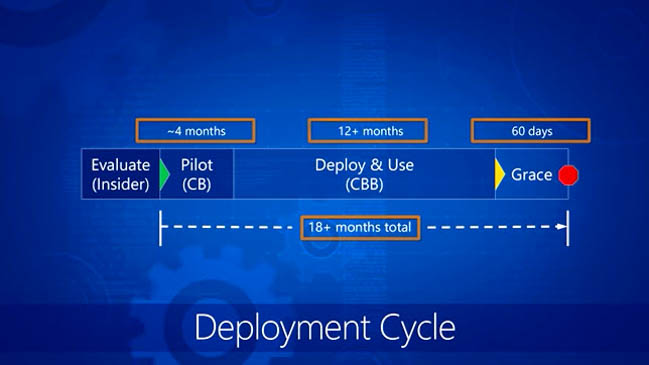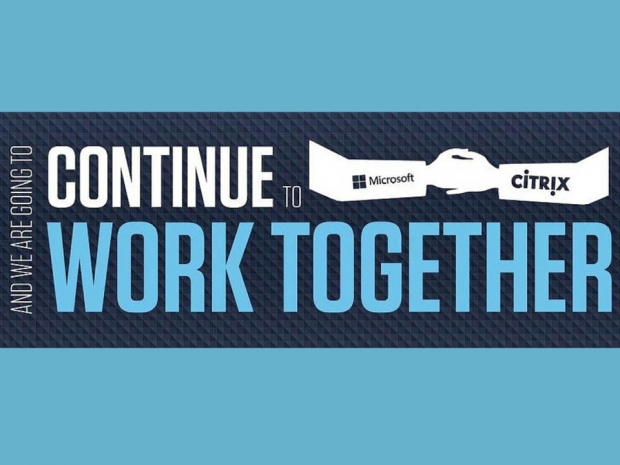When Microsoft officially released Windows 10 back in July 2015, it included a tagline which read, “Windows as a Service.” The idea then was that the company would transition Windows away from being an inflexible software launch every few years into a product that sees periodic major releases that are continually updated and tweaked in the background.
18-month upgrade cycles are too tedious for administrators
While a steady stream of bi-annual build releases are great for resolving major issues and provide a continuous flow of new features, the problem is that they pose a huge burden for system administrators and IT professionals. These brave souls now operate around the clock in their day-to-day business routines and are left deploying an often-insurmountable series of new builds and updates to thousands of clients both locally and remotely.
Ed Bott says that for the past year, there has been a steady stream of complaints from “longtime Windows admins and users” who have been dealing with overly aggressive upgrade cycles. Their number one complaint is simply, “Because of Windows-as-a-Service, we’re losing control of our desktop PCs.”
Of course, Microsoft is not quite ready to offer a full cloud-based version of Windows 10 where the entire desktop is streamed from its servers. But recent rumors about its possible acquisition of Citrix suggest that it would be leaning in that direction. The company’s Azure RemoteApp client for Remote Desktop users is being discontinued in August and will be replaced with Citrix XenApp “express” as part of an expanding partnership in the remote desktop and applications space. Citrix is also offering Xen Desktop Essentials, allowing users to manage a Windows 10 remote desktop for $12 per month.
The partnership between Citrix and Microsoft is sure to raise some eyebrows as Redmond edges ever closer to rolling out true cloud-based Windows 10 desktops. From a release standpoint, the time between Threshold 1 (RTM build) and Threshold 2 (1511 – November Update) was four months, while the jump to Redstone 1 (1607 – Anniversary Update) was nine months, and from there to Redstone 2 (1703 – Creators Update) was eight months. But for most users, this slide from a Microsoft presentation shows the support lifecycle for a typical Windows build is about 18 months.
No “rollback” feature for patches
If Microsoft does acquire Citrix, it would indicate that build upgrades could be deferred, but they cannot be held off indefinitely. Bott mentions that starting with build 1607, Microsoft reduced the grace period for deferring updates from eight months to 180 days, with a 60-day grace period at the end. Meanwhile, patches will become an all-or-nothing deal, and can often pose a risk for mission-critical applications. Starting in 2017, the company wants to release feature builds at least twice every year. But for most businesses, this translates to a build upgrade roughly once per year.
No more service packs
Since Windows XP, Microsoft has released cumulative service packs that allow multiple problems to be fixed in a single update installation. In all of its operating systems from XP through Windows 7 (except Vista), SP3 would contain all the fixes included in SP2, and SP2 would contain all the patches from SP1. With Windows 10, this changed to a “feature update” model that required users to upgrade or reformat to the latest build. While the transition from service packs to build updates is mostly transparent for consumers, it has posed a serious headache for OEMs because their recovery partitions aren’t automatically upgraded to the latest build. When a device is rolled back using an OEM recovery partition, for instance, it restores to the previous build. With the deployment of a cloud-based version of Windows 10, updates will become “all or nothing” with only an option to defer them for the above mentioned grace period.
For system administrators, this means Microsoft taking more charge of each and every desktop in the office environment, with less ability to troubleshoot major disruptions if an update breaks compatibility with an important third-party app or software utility.
Thin-client Windows 10 coming later in 2017
Back in January, Microsoft began talking about a new version of Windows 10 called CSHELL, which is short for “Composable Shell,” that would to scale and adapt the OS to any type of device, display size or user experience. Keep in mind that this is not a full cloud-based version of Windows 10 but more of a lightweight, thin-client alternative to Windows RT. The possibilities include desktop, tablets, consoles, set-top boxes, smartphones and more. This version of Windows will be connected to the Windows Store and should make a great fit for ARM-based devices as a Windows RT alternative – though the drawback is that it will only be capable of running apps built using the Universal Windows Platform framework.
Expect more information on true cloud-based versions of Windows 10 as Microsoft and Citrix continue to make platform announcements over the next few months.




